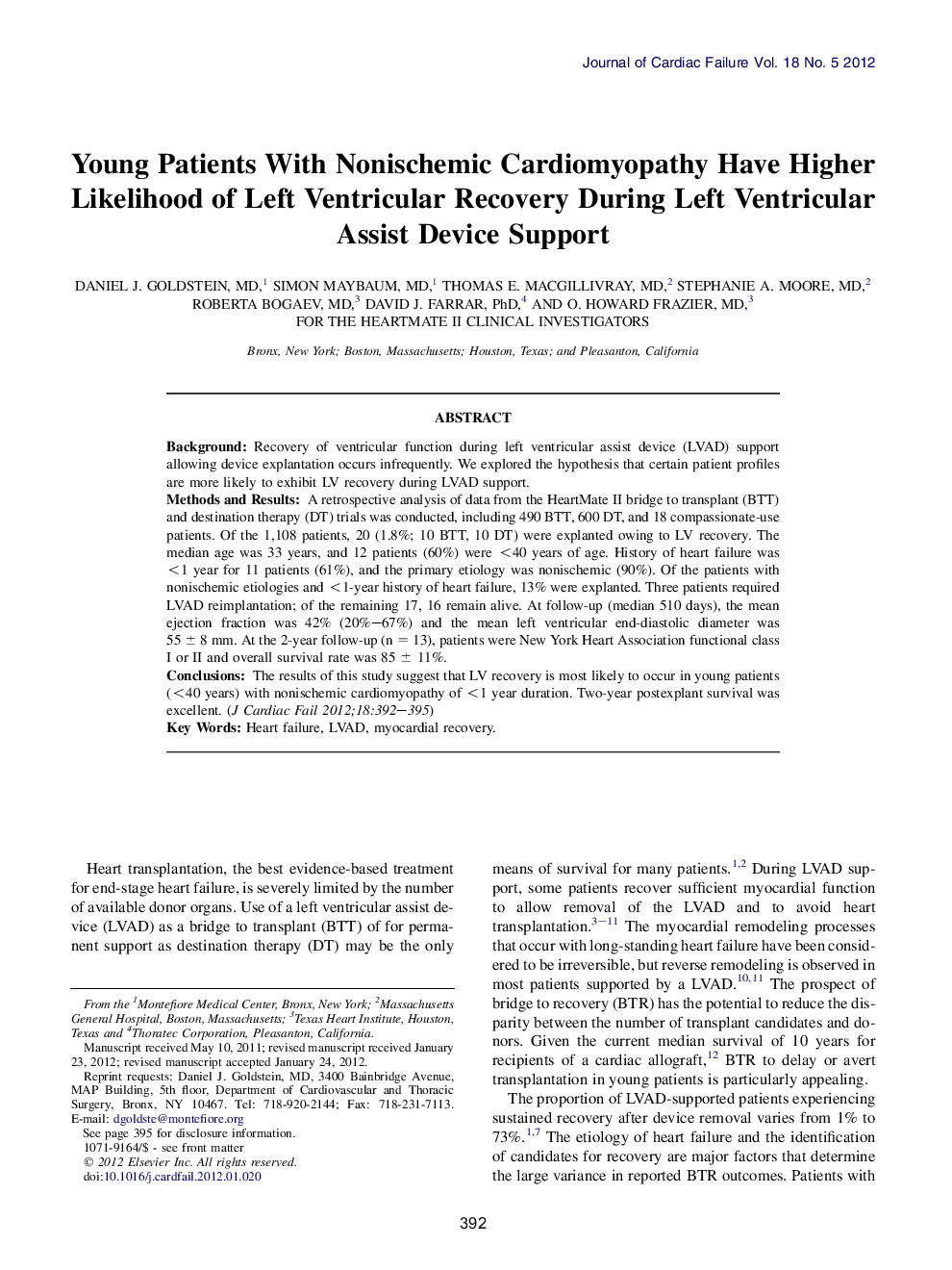| Article ID | Journal | Published Year | Pages | File Type |
|---|---|---|---|---|
| 2960407 | Journal of Cardiac Failure | 2012 | 4 Pages |
BackgroundRecovery of ventricular function during left ventricular assist device (LVAD) support allowing device explantation occurs infrequently. We explored the hypothesis that certain patient profiles are more likely to exhibit LV recovery during LVAD support.Methods and ResultsA retrospective analysis of data from the HeartMate II bridge to transplant (BTT) and destination therapy (DT) trials was conducted, including 490 BTT, 600 DT, and 18 compassionate-use patients. Of the 1,108 patients, 20 (1.8%; 10 BTT, 10 DT) were explanted owing to LV recovery. The median age was 33 years, and 12 patients (60%) were <40 years of age. History of heart failure was <1 year for 11 patients (61%), and the primary etiology was nonischemic (90%). Of the patients with nonischemic etiologies and <1-year history of heart failure, 13% were explanted. Three patients required LVAD reimplantation; of the remaining 17, 16 remain alive. At follow-up (median 510 days), the mean ejection fraction was 42% (20%–67%) and the mean left ventricular end-diastolic diameter was 55 ± 8 mm. At the 2-year follow-up (n = 13), patients were New York Heart Association functional class I or II and overall survival rate was 85 ± 11%.ConclusionsThe results of this study suggest that LV recovery is most likely to occur in young patients (<40 years) with nonischemic cardiomyopathy of <1 year duration. Two-year postexplant survival was excellent.
